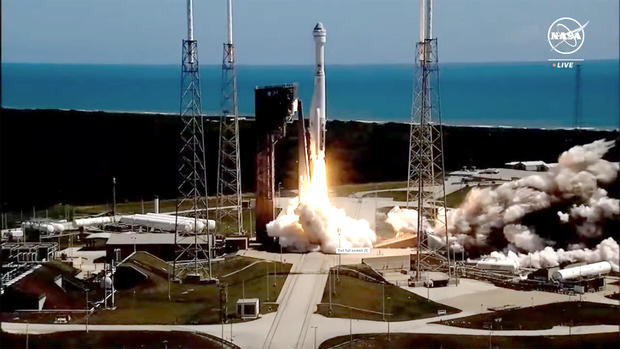
Boeing’s Starliner capsule finally launches, but runs into more trouble with helium leaks
A United Launch Alliance Atlas 5 rocket blasted off Wednesday and safely boosted Boeing‘s long-delayed Starliner crew ferry ship into space for its first piloted test flight. But flight controllers had to step in late in the day to troubleshoot additional, unexpected helium leaks in the ship’s propulsion system.
The Starliner was launched with a small-but-persistent helium leak in a specific “manifold” — that is lines routing pressurized gas to valves that operate one specific thruster. The launch was delayed several weeks for troubleshooting, but managers concluded the spacecraft could be safely flown as is.
NASA
Late in the day Wednesday, flight controllers detected signs of two more helium leaks in different parts of the ship’s plumbing and carried out steps to isolate the affected lines. That stopped the leakage, but disabled six of 28 reaction control system jets in four propulsion modules mounted on the Starliner’s service module.
pressure-relief valve in the Atlas 5’s Centaur upper stage.
A more vexing problem then cropped up: a small-but-persistent helium leak in the Starliner’s propulsion system that affected one of 24 low-power maneuvering thrusters in the capsule’s service module. Mission managers ultimately decided to launch the spacecraft as is, concluding the leak did not pose any credible safety risk.
Launch was rescheduled for June 1, but the crew’s second countdown stopped at the T-minus three-minute and 50-second mark when one of ULA’s ground launch sequencer computers, one of three networked systems controlling the final moments of the countdown, failed to run in synch with its counterparts.
The problem was traced to a faulty power supply. Work to install and test replacement hardware delayed the Starliner’s third launch attempt to Wednesday.
More
More
Source: cbsnews.com